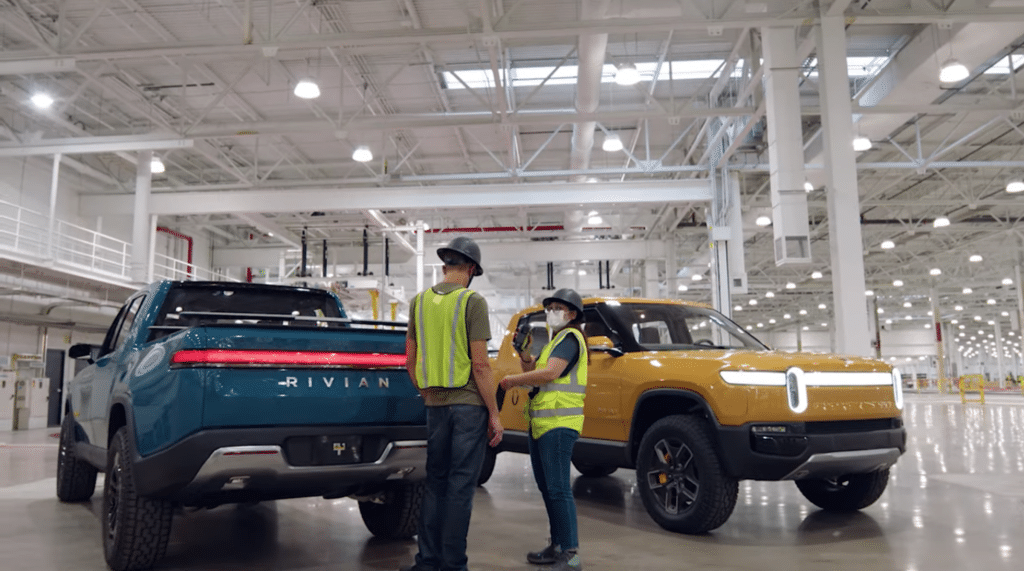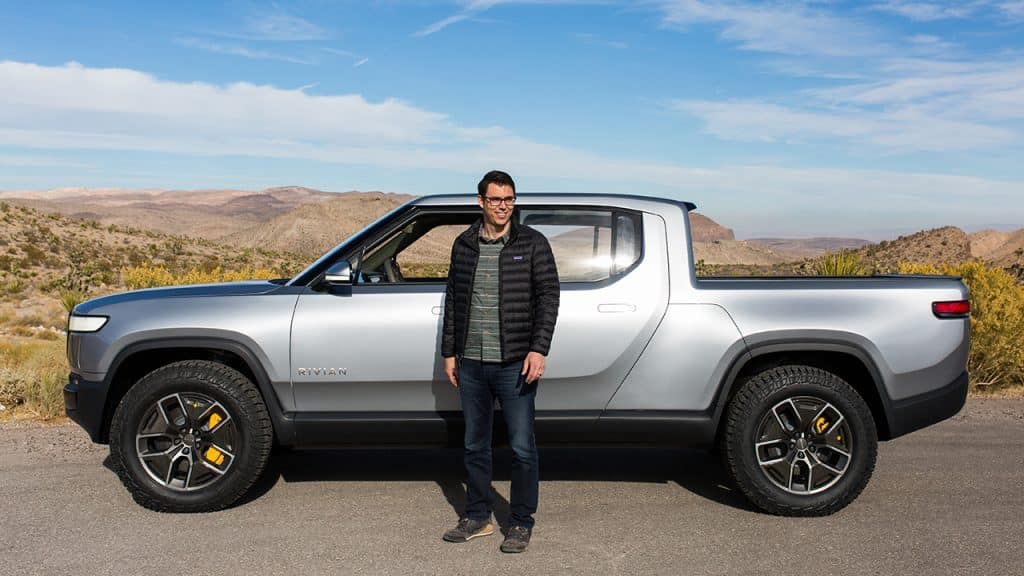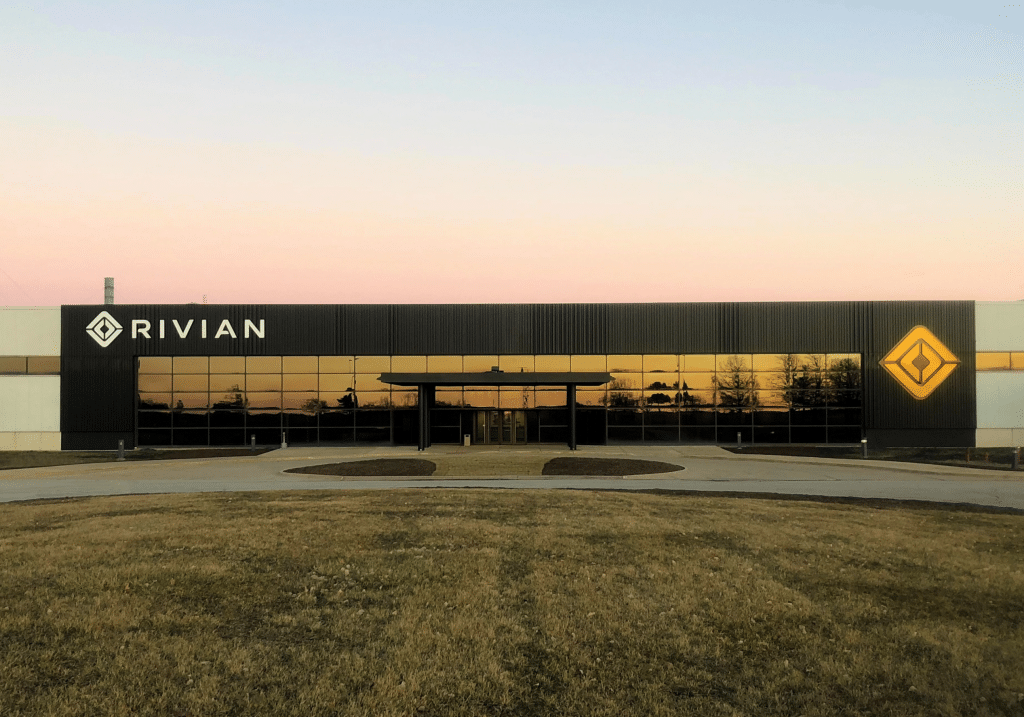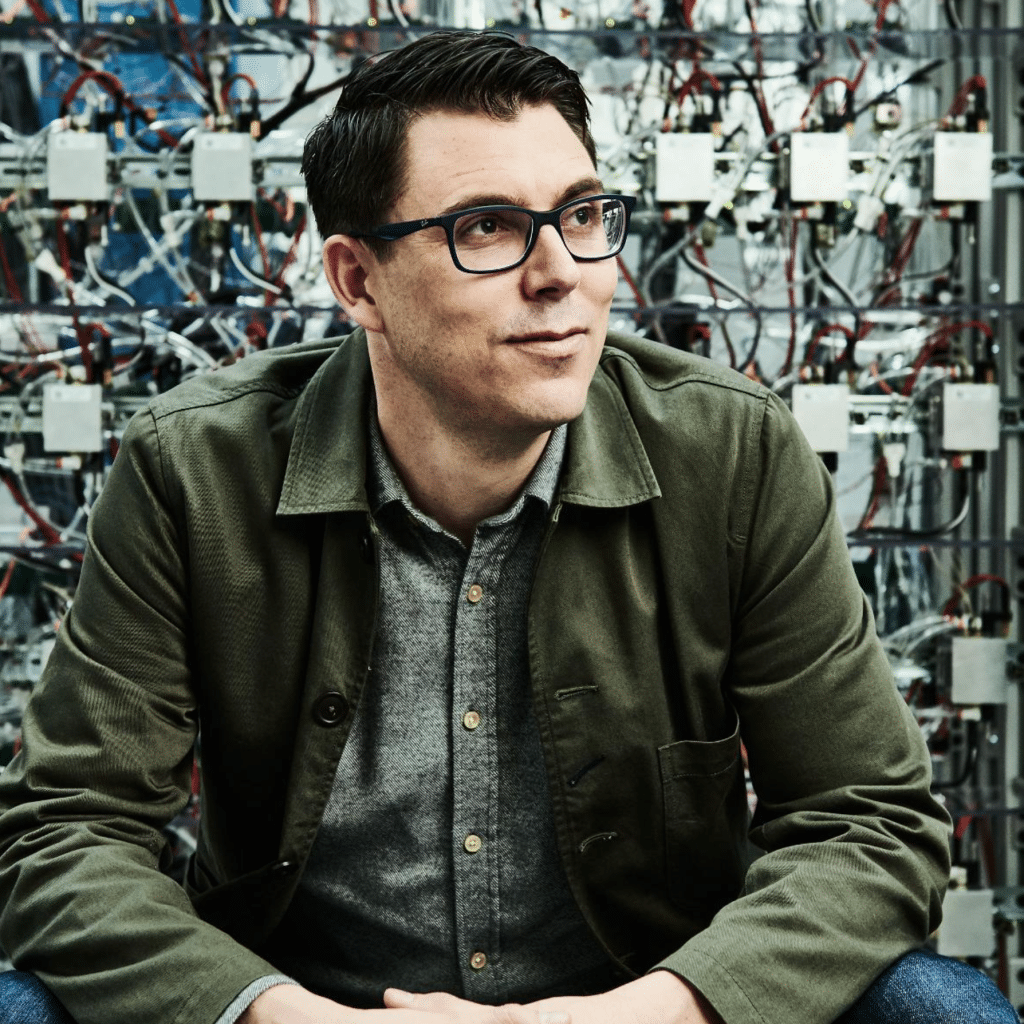When a company enters a competitive market, being successful is no easy feat. And for Rivian, that is exactly what happened.
One of Rivian’s biggest challenges was in becoming the first company consumers think of when they think of an electric car company. That’s because many consumers automatically think of Tesla – but Rivian is changing the electric car game.
Rivian has the backing of Amazon, has manufactured different electric vehicles than their competitors, and has a logo that stands out in this market. And with all of this, Rivian is becoming more and more of a household name.
To learn more about how Rivian is changing the electric car game, and how their logo has helped grab the attention of consumers, keep reading below!
Meet Rivian
To understand Rivian’s story, it’s important to understand the story of Rivian founder and CEO, Robert Scargine. Robert was born on January 19, 1983, in Melbourne, Florida. His career path, which resulted in his creation of Rivian, is a direct result of his love of cars and the outdoors at a young age.
After high school, Robert attended Rensselaer Polytechnic Institute where he graduated with a degree in mechanical engineering. His education didn’t end there though. Robert went on to attend the Massachusetts Institute of Technology (MIT) for his master’s degree in mechanical engineering and then stayed at MIT for his doctorate, which he received from MIT’s Sloan Automotive Lab.
Robert’s first company was Mainstream Motors, and that company was all he needed. Mainstream Motors, which was founded in 2009, became Avera Automotive, which became Rivian in 2011. The name, Rivian, was inspired by the Indian River and represents the younger years that Robert spent exploring there.
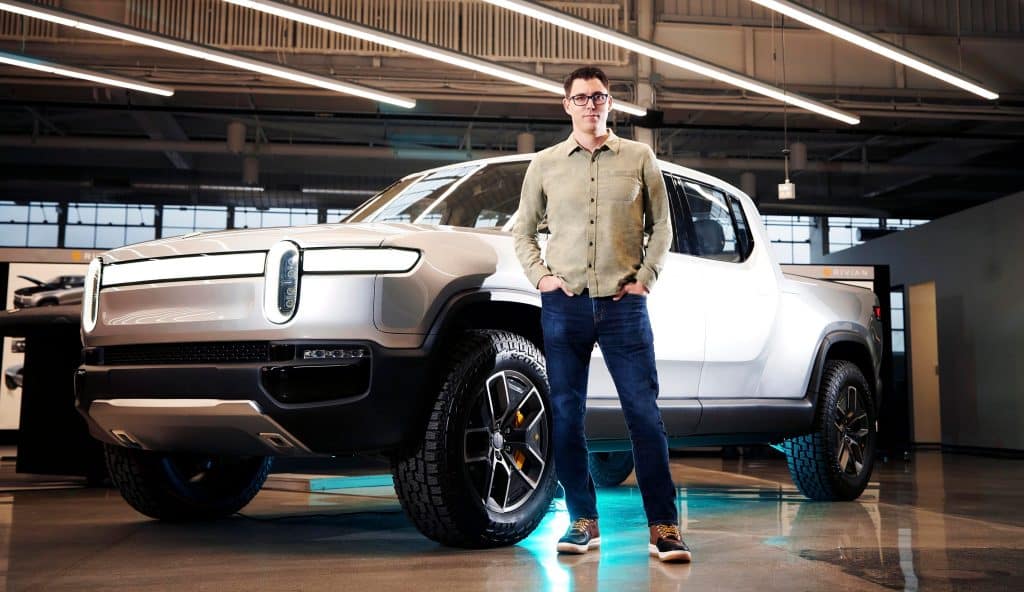
So, what is Rivian? Rivian is an electric car brand in the United States (and is different than Tesla and other competitors). What makes Rivian different is that the mission of the brand is to introduce (different) vehicles that are environment-friendly and sustainable. Headquartered in Irvine, CA, the most notable vehicle models that Rivian has produced are the R1T, an entirely electric truck, and the R1S, an entirely electric SUV. With these models, Rivian never compromised on their vehicles’ motor power. For instance, the electric truck model still is equipped with four motors and can produce 415 horsepower with the front motors, and 420 horsepower with the rear motors. These motors collectively help the vehicle to reach 60 mph in only three seconds.
Since Rivian was launched, Robert has been able to generate investor support. One of their first investments was back in 2017 when the company received $450 million from Sumitomo Corporation and Abdul Latif Jameel, a Japanese investment group and a Saudi Arabian investment firm. Following this early investment, Amazon and Ford Motor Group invested in the company in 2019. Ford Motor Group invested nearly $500 million, and Amazon invested $700 million. These two investments provided the company with another $1.2 billion. With this purchase, Amazon officially gained the largest stake in the company, still owning 22.4% of Rivian today. Beyond those companies and firms. Cox Automotive, Black Rock, and T. Rowe Price have also all invested in the automaker.
In Robert’s personal life, he married Meagan McGlone in August 2014. The couple has three children together.
Rivian’s Evolution
Diving into Rivian’s evolution a little more, let’s take a closer look at how this company came to be.
2009: Rivian is developed
In 2009, Rivian Automotive was created by Robert Scaringe. The only difference from the Rivian that we know today is that when it was launched, it was launched under a different name – Mainstream Motors. Mainstream Motors turned into Avera Automotive, which turned into Rivian Automotive, Inc. in 2011.
What drove Robert’s creation of this brand was a desire to create a sustainable and environmentally friendly vehicle that wouldn’t have as harmful of effects on the environment as other automobiles.
2015: Rivian opens two research facilities
When Rivian was first developed, Robert’s peer, Peter Stevens, designed the prototype for the automobile. This prototype was called “R1” and was for a mid-engine hybrid coupe, which was 100% electric. In 2015, Robert took his research and development of his automobiles to the next level with the creation of two research facilities, one in Michigan and one in the Bay Area.
2017: Rivian purchases a production plant
Once Robert was happy with the prototypes and research, he led Rivian in January 2017 to purchase a production plant that was previously owned by Mitsubishi Motors in Illinois. This purchase cost Rivian $16 million, but this purchase was essential because it allowed Rivian to release their first two models at the LA Auto Show, the 100% electric truck and the 100% electric SUV (named R1T and R1S, respectively).
Today: Rivian gains momentum
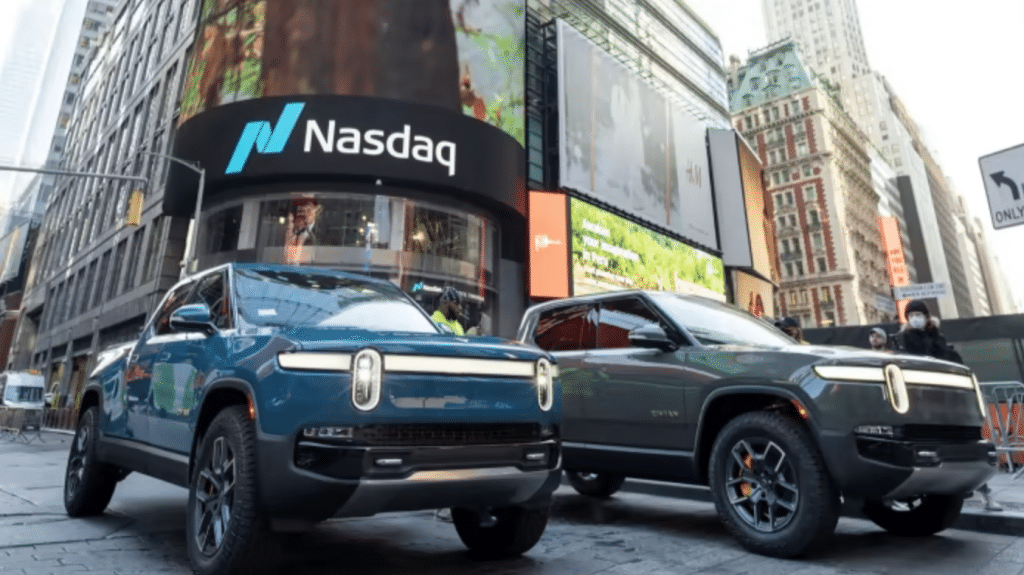
Rivian has grown to raise more funds, which propelled them to launch an IPO on November 10, 2021. Rivian was the first electric car company to provide consumers with an entirely electric pick-up truck option and their dedication to this industry is probably one of the many reasons why they were awarded the Motor Trend Truck Award for this truck model in December 2021.
Roadblocks Along the Way
When it comes to roadblocks for Rivian, the first thing that comes to mind is, you guessed it, Tesla. Tesla is one of the leading (if not the leading) electric car manufacturers in the industry. Because of this, Rivian has had to stand out with its models and its logo design, especially since Rivian entered the market after Tesla. To get a competitive edge over Tesla, Rivian has put its efforts into creating hands-free, semi-autonomous driving technology (for pickup trucks and SUVS) and other innovations with electric charging stations across the company.
One other roadblock that Rivian has had to navigate was the global pandemic. While Amazon stayed invested with the brand through the coronavirus pandemic, Ford backed out of its investment and canceled its orders with Rivian. Rivian was able to bounce back though with Amazon’s continued backing and funding.
The Meaning of Rivian’s Logo and Rivian’s Logo History
When creating a logo for this electric car company, it was important for Rivian to craft a logo that was different than Tesla’s and stood out on the market. Rivian needed its logo to be attention-grabbing and influential, which drove a lot of the logo design elements that we describe more below. Before diving more into this logo, it’s important to note that while the company was founded in 2009, the first logo was not released until 2018. That’s because it took the company almost ten years to bring their prototype to production but once they did, the below logo was created.

2018 – Present: The first (and only) version of the Rivian logo
For a newer company, Rivian released an initial logo that worked and subsequently didn’t require any updates. This logo consists of a compass symbol which is made up of two squares. To form the compass, these two squares are placed inside one another. To make the logo interesting, the designer opted to tilt the squares slightly, angling the “compass” design. Within the compass, the squares include smaller arrow symbols further solidifying that this is what this logo resembles. Sometimes the logo is featured with the wordmark “Rivian,” and other times the logo simply features the emblem design.
Rivian’s logo font:
Often the Rivian logo appears without any words but sometimes it appears with the company name. When “Rivian” is included on the logo, it is written in a bold, modern geometric sans serif typeface that stands out. Written in all capital letters, the futuristic and modernized font choice represents how Rivian hopes to be a gamechanger in this industry.
Rivian’s logo color:
When you look at Rivian’s logo you will see three colors. The first color is the primary color of the logo, yellow. This attention-grabbing color choice conveys feelings of imagination, friendship, happiness, and hope. All these feelings are important to the greater Rivian brand. A second color on the logo is black. When used in this logo, sometimes the black replaces the yellow components to make it a neutral color scheme. Black conveys feelings of power, wealth, elegance, formality, and mystery, which are, just like yellow, pillars of the brand. A final color you will see on the logo is white. White is used in separating the two squares and often is used to convey feelings of positivity. Beyond that, white is used to symbolize peace, purity, simplicity, cleanliness, humility, innocence, and goodness.
Rivian’s logo symbols:
At first glance, you may only think Rivian’s logo is a simple, tilted square. However, the logo is much more than that. Some believe that each of the four sides of the tilted square represents each of the four elements (air, Earth, fire, and water). Whether Rivian was going for this symbolism or using the tilted square to represent balance, stability, and/or community, the placement and orientation of the square is an intentional choice. A second symbol within the logo is an arrow. When an arrow is thrown, it moves through the air. For Rivian, this represents the path they are taking to achieve their goals within this industry. The way these abstract arrows are placed within the square represents a compass which symbolizes Rivian’s quest to always direct their customers in the right direction.
Rivian Today
Rivian is the opposite of a company that is slowing down, the company is speeding up. While it may have taken almost a decade for his cars to be produced and released to the public, they finally were released into the market in 2021 to much praise. That same year, while a global pandemic was unfolding, Rivian launched its IPO that November, raising $13.5 billion, and reaching a brand valuation of $66.5 billion.
Looking more at Robert’s entrance into this market, Robert made history by unveiling an electric pickup truck model, which Ford, General Motors, and Tesla have not created yet. What allowed Rivian to push through production and launch was the company’s backing from investors. Amazon is the largest Rivian investor, with a 22.4% stake in the company, followed by T.Rowe Price with an 18.8% stake. Collectively, Robert has raised $11.15 billion in private capital from investors.
The pandemic was risky for the automobile industry but unlike Ford, Amazon stuck with Rivian. Amazon ordered 100,000 electric vehicles from Rivian and Rivian hopes to complete 10,000 of these automobiles in 2022. What is helping Rivian fulfill these orders, and keep growing, is the company’s growing workforce. What began as a 250-worker operation in 2018, now has grown to include over 9000 employees.
Robert, himself was estimated to be worth $1.7 billion at the end of 2021. His leadership of the company led Rivian to receive the Motor Trend Truck Award in December 2021.
Lessons Learned from Rivian
It’s hard to stand out in the automobile industry, but Rivian was able to do this somehow. That’s due in large part to their logo design team, and that is something we can all learn from.
For starters, Rivian kept its logo simple, without overcomplicating different elements. The minimal features of the logo allowed for it to be versatile, eye-catching, and clean – which leads to the next lesson we can all learn from Rivian, make your logo attractive and memorable. The Rivian logo matches the Rivian brand, and the design elements are visually pleasing to look at. These design elements also help to make the logo stand out and be memorable. The emblem is an attention-grabbing one that will resonate with consumers for years to come, while also standing out from the competition. Finally, the logo is scalable and highly versatile. No matter what marketing medium the logo is printed on, the logo will keep its core characteristics.
While Rivian is a young company that has only had a logo for a few years, these are valuable lessons you can take with you as you develop your logo. Since Rivian entered a competitive market, it needed a logo that would stand out and make a splash. That’s exactly what Rivian did, and it’s what you can do too.





